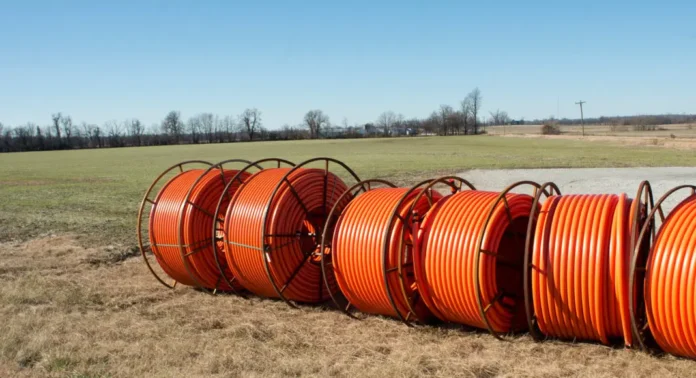Fiber-based broadband access is correlated with a number of aspects of quality-of-life
A new report on the status of U.S. broadband looks at how fiber deployments are correlated with several aspects of quality of life, and concludes that access to high-speed broadband is becoming increasingly influential in how people decide where to live and work.
The report from research firm RVA, commissioned by the Fiber Broadband Association, notes that 2022 has been a “pivot year” for broadband deployment, driven by pandemic pressure to broaden access to fast internet speeds. Billions of dollars at the federal and state level are being poured into broadband infrastructure, and telecom and cable companies can’t build out fast enough. The report calculated that as much as $130 billion in federal state and local subsidies are in play right now as the U.S. seeks to connect every American to high-speed broadband.
The study looks at the fiber landscape in the U.S. as well as consumer research related to people’s choices and options in broadband. In addition, RVA compared statistics about households with fiber access and those which do not, controlling for various factors in order to provide information about the impacts of high-speed broadband.
By RVA’s calculations (and including data from Pew Research), about 93% of Americans use the internet and about 92% have internet access at home, with an estimated 77% using wired service and 15% accessing the internet with wireless service (the majority of that coming via mobile phones).
Five key takeaways about the social and economic impacts of fiber broadband include:
-There is still a sizable gap in high-speed broadband access. Low-income and low-population-density areas, if they have access, usually only have access to the slowest available speeds. The report found that the lowest-density zip codes in the U.S. have service levels with one-third the bandwidth of high-density areas. However, the report also pointed out the encouraging sign that internet adoption by people with low income and people in minority groups “has been very strong in the past few years.” For example, consumer research conducted by RVA found that among those who reported that they had just begun using the internet in the past four years, 58% had household incomes below $50,000 per year.
-Nearly three-quarters of consumers rank broadband service as “very important” to them, and it is among the top three factors that people take into consideration when they choose a place to live (the other two are affordable cost-of-living and low crime).
-This plays out in moves from rural areas to other locations. When people move from rural areas, nearly half of them move to a location with better internet service, according to the report, which found that 47% of rural moves are to areas that have fiber networks available. “FTTH availability within more rural areas seems especially important given the dramatic changes in living desires that are currently occurring,” the report found, noting that a previous FBA whitepaper on the rural digital divide found that the “century-long movement out of rural areas to urban areas began to reverse about ten years ago.” But clearly, fiber access still plays a role in the decision of where to live.
-Areas with fiber access are also likely to have other quality-of-life amenities that make a place desirable. The report found that when a home is connected to the internet via fiber, there are correlations with higher revenue for home-based businesses, and people who have lower incomes report that they feel that they have “very good” access to healthcare and that their children have “very good” access to education.
-The report also looked at several aspects of fiber and sustainability—and the fact that the technology can successfully enable people to work from home is a big influence in reducing carbon footprint. Fiber-to-the-home “has the most offset to other [carbon dioxide] costs and the lowest overall CO2 output” compared to DSL or hybrid fiber-coax, the report claims.
The full Status of U.S. Broadband and the Impact of Fiber Broadband report is available from the Fiber Broadband Association here.

